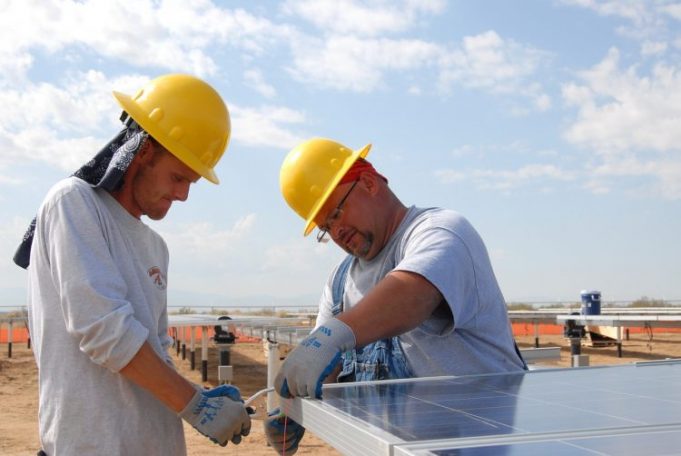by Chris King
The construction industry continued to grow throughout 2018, even as labor shortages plagued different sectors. Unemployment in the industry reached a record low of 3.6% back in October 2018, and even though that number now sits at 5.1% as of March 2019, it remains much lower than the 7.3% unemployment rate that began 2018.
2019 should continue to be a time of growth and expansion for the construction industry, even as some factors remain unpredictable. However, there are a few specific trends from 2018 that we can see continuing on into 2019.
Read on to learn the three construction industry trends that we believe will carry on throughout this year.
ADVANCEMENTS IN TECHNOLOGY
In recent years, members of the construction industry have made slow but steady strides in implementing technology into the work they are doing. These advancements in technology include improved construction project management software, which allows project managers to better schedule projects and better utilize workers’ time and effort.
Additionally, drone usage within the construction industry is becoming more widespread in order to gain photographs and video of the construction site’s landscape. With these details, more information can be supplied to the survey data and, more importantly, the safety and security of the construction site can be improved to ensure that all workers are more protected.
Lastly, 2019 should see even more research being put into green technology that can be used within construction projects and green construction projects overall. In particular, members of the construction industry are turning to materials, such as self-heating asphalt and bricks made from recycled cigarette butts, to help reduce the industry’s global emissions, which, according to the UN Environment Global Status Report for 2017, make up 39% of the energy-related CO2 emissions produced by the entire world, and help the environment.
MORE MODULAR AND PREFABRICATED CONSTRUCTION PROJECTS
The number of modular and prefabricated construction projects should continue to increase throughout 2019. The rate at which these projects can construct residential and commercial buildings, such as office buildings, apartments, and hotels, remains appealing for many reasons.
First and foremost, modular and prefabricated construction can save companies a lot of time and money because this type of construction for these buildings is done offsite. Therefore, the weather does not cause any unexpected delays.
Furthermore, modular and prefabricated construction projects recycle materials that they do not use, which is important for multiple reasons. Not only does this process cut down on waste and keep in line with the more “green” mentality that many members of the construction industry are trying to adopt, but it can also help save cost on the increasingly more expensive building materials.
INCREASED COST FOR BUILDING MATERIALS AND DECREASED LABOR FORCE
The cost of building materials increased steadily throughout much of 2018. This expensive trend is not expected to go anywhere in 2019.
The most increased costs were for materials such as iron, steel, and softwood lumber. Businesses need to be mindful of these more expensive supplies when planning construction projects and look for potential solutions that will help offset costs.
GOING FORWARD
It is vital that those in the construction industry keep these three trends in mind as they continue into the second half of 2019.
These trends will likely not be the only factors that shake things up within the construction industry in 2019, especially with labor shortages also expected to continue. However, focusing on these trends and being open to learning about other new ones as the year progresses will ensure that businesses are in the best positions possible to succeed in 2019.
Do you have any questions or comments about this post or any of the resources DSP offers? If so, please contact us today so we can help!
Want to uncover the 5 big mistakes hiring managers make in construction-related industries? We’ve got you covered in our guide to help you identify and overcome these mistakes!
Originally posted on: definitivesearchpartners.com


